A healthy dose of entrepreneurial spirit is the driving force behind all marine manufacturing, and as the economy gradually recovers, boating innovations continue to emerge and evolve in 2011. As you might expect, many of today’s advancements are tied to the rapid growth of electronics technology. Others, such as this Yamaha outboard, pull some of their science from outside industries, while still others emerge from boating companies that simply take a different approach to an existing product or service, making it new again. Regardless, all share a specific goal: to offer boaters greater enjoyment of the sport (and, if you’re one of the “early adopters,” to get you into the showroom!). Here are some notable trends and products to watch in 2011, along with a few of the people behind them.
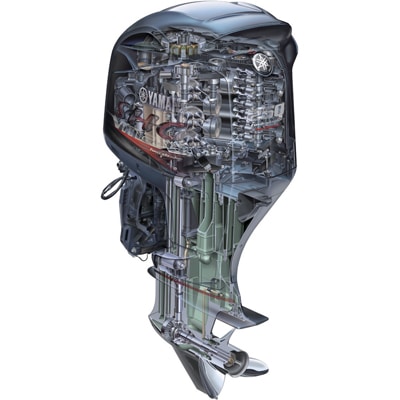
Transferable Technologies
Innovation: Plasma-fused cylinders
How It Came to Be: Yamaha’s 250 V Max SHO was introduced specifically to target the hard-charging bass- and bay-boat markets. Yet, the 4.2-liter four-stroke pulls some of its coolest features from industries well outside the marine world. Take, for instance, its plasma-fused sleeveless cylinders. These have been used for years in piston aircraft engines and over-the-road diesels, engines that are designed — much like outboards — to satisfy longhour operation with an emphasis on durability. Yamaha engineers saw the similarities and acted. The SHO’s new cylinders replace steel sleeves and provide a durable surface for the piston rings, while reducing powerhead weight and optimizing displacement. But the plasma technology was only part of the equation, as Yamaha engineers took additional steps to trim precious weight. The alternator, for instance, is 5½ pounds lighter than its predecessor, yet it packs the same punch. The engine also uses a mufflerless exhaust system, eliminating further pounds. “It just wasn’t really necessary,” says David Meeler, product marketing information manager.
Why It’s Unique: By thinking outside the box and applying science from other arenas, Yamaha engineers were able to create a better engine that produced more efficient heat transfer between the cylinder walls and cooling system.
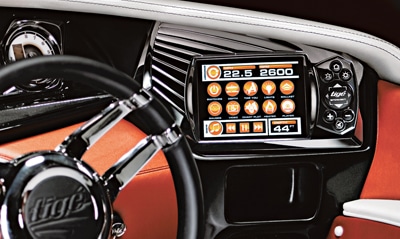
iPhone Meets Ski Boat
Innovation: Touch-screen dash systems
How It Came to Be: Dan Gutierrez, design and marketing director at Tigé Boats, chuckles recalling a company meeting during the winter of 2008. Tigé owner Charlie Pigeon walked into the meeting, held up an Apple iPhone and proclaimed, “I don’t want anything else in our boats until we can do this!” “And he meant it,” says a laughing Gutierrez, who was then tasked with creating TigéTouch, which would become the first touch-screen instrument panel on a ski boat. The system emerged in the 2010 Tigé line and created quite a stir. Joining the party, Malibu Boats is launching its own version of touch-screen technology in select model-year 2011 boats. The Malibu Touch Command (MTC) dash was designed with the same technology partner used by Tigé (Medallion Instrumentation Systems) and even offers a touch-screen digital ignition button.
Why It’s Unique: It offers a glimpse of the future. While it remains to be seen if broader applications will apply outside the highly specialized ski-boat market, many manufacturers have taken notice.
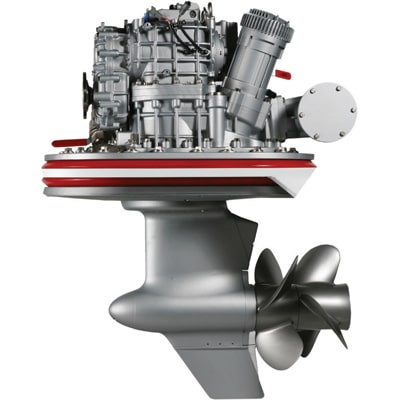
Pod Power
Innovation: Single-pod propulsion
How It Came to Be: Arguably the most significant recreational boating evolution in recent months debuted at the fort Lauderdale International Boat Show last October, when ZF Marine introduced a single-pod propulsion system in a SeaVee 34. It marked the first single-pod driveline ever in a pleasure boat. Is this something we’ll see more of? Likely, as consumer demand for joystick control persists. The boat had yet to be formally tested at press time, but SeaVee President Ariel Pared says he fished the boat, noting that the joystick maneuvering and absence of outboards made for a clean transom and easier fishing. The ZF system is comprised of a 2800 Series pod-drive, 185 AC bow thruster, SmartCommand controls with joystick and SteerCommand electrical steering system. SeaVee, of course, is one of the more forward-leaning center-console builders, having already constructed 15 39-footers with twin IPS drives and, recently, a 43 Express.
Why It’s Unique: It brings another option to the market for boats that traditionally would power with a single inboard or twin outboards.
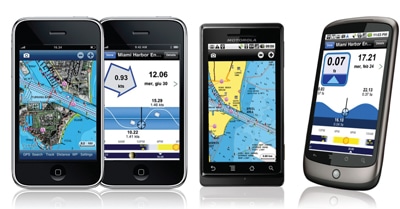
There’s an App for That
Innovation: Nautical mobile applications
How It Came to Be: Navionics released the first generation of its popular application in late 2008, and since that time, iterations have been steadily improving. Offering excellent nautical charts with tidal, current and weather information, Navionics’ recently released 5.0 version also includes a user-generated content (UGC) feature, in which users can input on-the-water data and view information others have input as well — all in real time. The Navionics app is compatible with iPhone, iPad and Android mobile devices, and perhaps its most innovative feature is Plotter Sync, which Navionics has been working on for some time with Raymarine. This function allows you to synchronize routes and waypoints from a mobile device to a Raymarine chart plotter via a wireless network.
Why It’s Unique: Mobile marine apps are as cool as things get. Factor in wireless interaction between these apps and marine electronics, and you’ve got a whole new ballgame in the making.
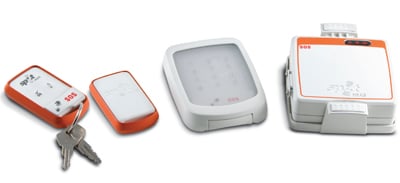
Don’t Rock the Boat
Innovation: Boat-monitoring and theft-notification services
How It Came to Be: Peter Dalton recounts an old story in which he was wintering one of his cabin cruisers on a California lake. Checking on the boat one day, he was horrified to find a foot of water sitting in the salon. “The worst nightmare of any boater,” groans Dalton, CEO of Globalstar Inc., parent company of Spot LLC. Dalton is hopeful his new Spot Hug product will help prevent such mishaps — and possibly save boaters money on insurance. While the original Spot was designed as a personal handheld emergency beacon for boaters, the Hug system does this and more. Designed primarily for the boat, it uses wired or wireless sensors that, when triggered, notify an owner that something — whether potential theft or water where it’s not supposed to be — has gone awry.
Why It’s Unique: The Spot system has gained a solid reputation thanks to its integration with GPS satellite networks and the Globalstar network.
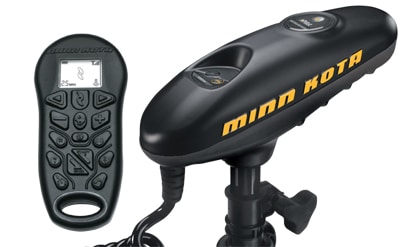
Electronic Anchoring
Innovation: GPS trolling-motor systems
How It Came to Be: The next phase of trolling-motor technology has arrived. Minn Kota’s i-Pilot system looks to be a winner and is most notable for its Spot- Lock technology (more commonly known as electronic anchoring), in which the trolling motor holds a boat stationary based on GPS coordinates. Constant speed and steering adjustments are made without any boater effort, holding a boat fast. This surely will be a boon for anglers fishing bottom structure in a strong wind or current. The system can even be purchased as an accessory to mount to an existing V2 or Terrova trolling motor, and it comes with a wireless remote with an LCD screen. Of course, Minn Kota isn’t alone in this game. Smaller companies, such as Rhodan Marine Systems and Watersnake, also are competing with GPS-based trolling motors of their own. All of them work well.
Why It’s Unique: It takes electronic maneuvering to a whole new level. The ability to hold stationary with no effort is a big-time breakthrough.
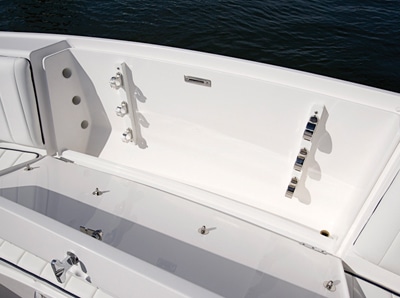
Opportunity Knocks
Innovation: Forward gunwale stowage
How It Came to Be: Sometimes innovations can appear seemingly out of thin air. Intrepid engineers were presented with a unique opportunity when designing the 245CC. The smallest boat in the company’s fleet — and its only open-style boat equipped with standard wraparound forward seating — had inwale gunwales that angled inward to create padded backrests. Recognizing the opportunity, Intrepid capitalized, incorporating lockable, hinged compartments into these areas. They open easily from atop and are large enough to hold three 30-pound trolling outfits per side when equipped with optional rod holders and tubes. The starboard and port compartments are 46 inches long by 18 inches high, and 7 inches deep at the bottom and 4 inches deep at the top. It was found space and made possible the further transformation of the boat into a serious fishing rig.
Why It’s Unique: The compartments make excellent use of space that would have otherwise gone unused. Not a Herculean advancement in boat design, but representative of the nimble and quick-thinking builder.
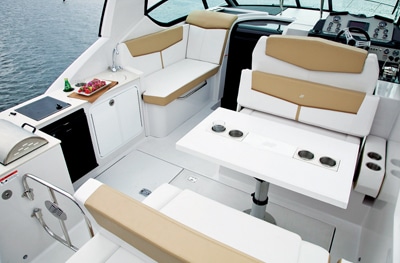
Customer Is King
Innovation: Cockpit galleys
How It Came to Be: About a year and a half ago, Four Winns decided to take a different approach in gleaning information from its customer base. While its marketing department still would conduct much of the research, Four Winns’ designers were charged with picking up the phone as well. What did they learn? “We quickly discovered that people are not cooking inside of the boat,” says vice president of engineering Christophe Lavigne. Four Winns put that information to work in the design of the V305, moving many of the cooking amenities normally reserved for the cabin to where their customers wanted them — in the open-air cockpit. By transporting the cooktop, sink and refrigerator outside with the optional grill, engineers increased the space belowdecks. A convertible u-shaped dinette lounge was added there, providing additional sleeping space for two and bringing the total sleeping capacity to six.
Why It’s Unique: The V305 became the only 30-footer in its class to offer belowdecks sleeping for six. It was a totally unintended benefit of reacting to customers’ desires in other areas of the boat. Now that’s innovation at work.








